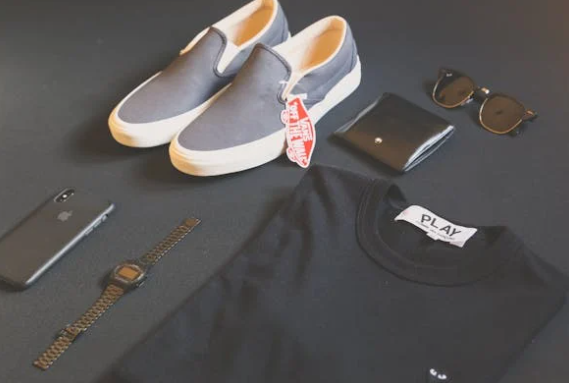
Loneliness isn’t just an emotion anymore—it’s become a market. In an era marked by digital overload, declining in-person social interaction, and shifting work structures, brands are quietly reshaping their strategies to respond to (and in many ways, capitalize on) the growing number of people who feel disconnected. Whether it’s a young adult living alone in a big city, a remote worker logging hours from a studio apartment, or an older adult grappling with social isolation, loneliness has moved beyond private struggle into public opportunity—and the business world has noticed.
From Social Crisis to Commercial Strategy
Studies from around the world have painted a consistent picture: people are lonelier than ever. In 2018, the UK appointed a Minister for Loneliness. The U.S. Surgeon General in 2023 declared loneliness a public health crisis. And globally, mental health professionals have begun linking long-term social isolation to conditions like depression, heart disease, and cognitive decline.
While governments discuss solutions rooted in health policy and community-building, consumer brands are tackling the problem from another angle: product development, marketing, and experience design. From dating apps and AI companions to cozy home goods and subscription services, the loneliness economy is booming—not necessarily by curing the condition, but by giving it something to buy.

Companionship-as-a-Service
Technology companies are leading the charge in designing “companionship” products that mimic human interaction. AI chatbots marketed not as tools, but as friends or romantic partners, have exploded in popularity. These apps offer validation, conversation, and the illusion of connection—all packaged in personalized, user-friendly interfaces.
Virtual pets and robots, once seen as gimmicks, are being reimagined for adults. A growing number of tech startups are producing “empathetic” machines designed for emotional support rather than task execution. For example, small desktop robots that make eye contact, respond to touch, or follow you around the house—once reserved for novelty or therapy—are now being marketed as lifestyle items.
But it’s not just new gadgets. Even traditional consumer electronics like smart speakers and home devices are being pitched as parts of a social ecosystem: music sharing with friends, virtual dinner parties, or daily check-ins that mimic human concern.
Selling Belonging Through Lifestyle
Lifestyle brands have also adapted their messaging to cater to a more solitary customer base. Home goods companies increasingly market comfort and warmth: soft lighting, weighted blankets, and indoor plants as “companions” for a peaceful solo evening. Furniture is being redesigned for single use—not just single people, but single experiences. Think modular seating, single-diner kitchen islands, or bedding described as “a hug in linen form.”
The pandemic accelerated this shift, but it didn’t start there. Minimalist design movements, “hygge” culture, and the rise of curated solo spaces on social media have helped reframe solitude as a lifestyle choice, not a failure. Brands now lean into phrases like “cozy alone time” or “treat yourself nights,” subtly rebranding loneliness as something to indulge rather than escape.
Streaming services have leaned hard into binge culture, designing algorithms that keep viewers engaged not just for entertainment, but for companionship. Auto-playing episodes, personalized suggestions, and even “Watch With Me” features tap into the feeling of shared experiences—even when you’re watching alone.
The Business of Safe Socializing
As real-world relationships feel riskier—due to health concerns, busy lives, or social anxiety—a number of companies have filled the gap with “safe” ways to interact. Digital platforms for book clubs, online classes, or hobby communities have flourished. Some are free, but many monetize access to curated groups, premium interactions, or coaching sessions.
Meanwhile, co-working spaces and coffee chains have rebranded from mere physical locations to “third places”—a term urbanists use for places that aren’t home or work, but provide a sense of social grounding. These environments promise low-pressure human contact, and brands increasingly design them with that need in mind: open seating, community bulletin boards, live events, or baristas who learn your name.
Even fitness brands are marketing more directly to solo users. Home workout platforms now build in social challenges, shared goals, or live instructors whose job is as much about emotional engagement as physical training. Peloton’s success, for instance, isn’t just about exercise—it’s about feeling seen and cheered on, even from a distance.
Loneliness as an Emotional Hook
Perhaps most striking is how loneliness is used subtly in advertising narratives. It’s rarely named outright. Instead, commercials and product descriptions highlight emotions like “feeling disconnected,” “seeking meaning,” or “craving real moments.” Brands use storytelling to reflect a consumer’s internal life back at them: the person scrolling social media late at night, the empty dinner table, the untouched chair across the room.
Luxury and mid-market brands alike have leaned into this emotional resonance. Subscription boxes, for example, are no longer just about convenience; they’re framed as monthly care packages. Personalized notes, curated playlists, and small surprises are all meant to create a sense of being thought of—by a brand, if not by a person.
Some campaigns go further, inviting consumers into branded communities. Whether it’s a Slack group for fans of a certain beverage or a hashtag movement encouraging people to share their “quiet moments,” the aim is not just product loyalty—it’s emotional dependency.
The Ethical Line: Help or Exploit?
There’s an obvious tension in monetizing loneliness. While some efforts clearly aim to offer meaningful support—like social platforms that connect seniors or community-based wellness groups—others blur the line between solution and exploitation.
For instance, AI companions that mirror romantic relationships can become emotionally addictive, raising questions about consent, emotional manipulation, and what happens when these tools glitch or disappear. Likewise, subscription models that prey on users’ need for social validation risk creating long-term dependence under the guise of self-care.
Critics argue that while these products may provide short-term relief, they can also reinforce isolation by substituting manufactured interaction for real connection. The more users rely on technology to meet emotional needs, the harder it becomes to return to messier—but more human—relationships.

What Comes Next?
The loneliness economy is still evolving. As consumers become more aware of how brands tap into emotional states, there’s likely to be a push for more transparency, ethics, and boundaries. Regulation may follow, especially around products that mimic psychological therapy or human attachment.
At the same time, not all developments are exploitative. Some companies are taking a thoughtful approach—designing products that encourage offline connection, support mental health, or offer tools for building community. In a best-case scenario, the market could help reduce stigma, raise awareness, and provide a bridge to more authentic forms of engagement.
Conclusion
Loneliness is a complex and deeply personal issue. It doesn’t have a single cause or a one-size-fits-all solution. Yet in our increasingly digitized, individualistic world, it’s a condition more people are living with than ever before. As brands race to meet this emotional need—sometimes with care, sometimes with calculation—consumers will need to navigate a marketplace filled with products that promise to fill a social void.
Whether these solutions truly help or simply monetize our most vulnerable moments will depend on both how they are built—and how thoughtfully they are used. For now, loneliness has a new companion: capitalism. And the story of how that relationship unfolds is still being written.
4o



